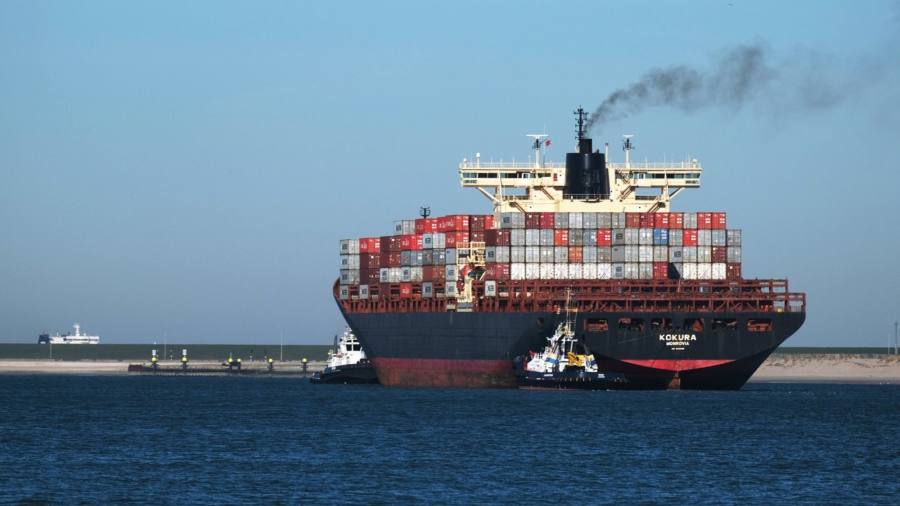
Receive free Shipping updates
We’ll send you a myFT Daily Digest email rounding up the latest Shipping news every morning.
Diplomats are nearing an agreement to target net zero emissions from shipping by “close to 2050” after almost two weeks of talks highlighted deep divisions over cleaning up the highly polluting industry.
The goal would significantly strengthen existing ambitions set by the UN’s International Maritime Organisation, which has committed to establishing a new target when negotiations between member states conclude this week.
But it will also disappoint environmentalists hoping for a concrete commitment to eliminate shipping’s greenhouse gas emissions by mid-century. A firm target to reach net zero by 2050 would align the industry more closely with existing global commitments on limiting climate change.
A draft plan seen by the Financial Times on Thursday states that international shipping should “reach net zero GHG emissions by or around, ie close to, 2050”, although it adds that “different national circumstances should be taken into account”. The strategy, which upgrades an existing ambition to halve emissions between 2008 and 2050, is expected to be finalised by Friday.
The caveats underline the struggle for developing and wealthier nations to reach a compromise and intensify concerns whether the fuel-intensive sector, which delivers up to 90 per cent of traded goods globally, can make substantial progress on decarbonisation.
“There’s a lot of distrust in the room between north and south,” said Faig Abbasov, director of shipping at climate group Transport & Environment, who is present at the IMO talks. “Compromise often reflects the lowest possible denominator. That is the big concern.”
Ahead of the IMO talks France rallied 22 allies behind calls to impose a levy on shipping emissions and align the industry with the 2015 Paris Agreement’s aim to limit global warming to 1.5C above pre-industrial levels. But these efforts were countered by China, which urged poorer countries to oppose a flat levy and the “unrealistic” ambitions of wealthy nations, according to a diplomatic note seen by the FT.
Abbasov added: “This is pretty much the last strategy for the next decade. This is the moment . . . The UN had the opportunity to set an unambiguous and clear course towards the 1.5C goal but all it came up with is a confusing fudge.”
The proposed plan falls short of targets laid out by the UN, which has said global emissions must fall 45 per cent by 2030 and reach net zero by 2050, if the world is to meet ambitions set out in the Paris accord. The draft strategy sets “indicative” targets for shipping, believed to be responsible for almost 3 per cent of greenhouse gases according to the IMO, to cut its emissions “at least 20 per cent” by 2030 and “at least 70 per cent” by 2040.
It adds that zero or near-zero alternatives should make up at least 5 per cent of shipping’s energy supply by 2030.
Member states have not agreed economic measures to reach the stated ambitions. Some, but not all, developing nations oppose a levy that they fear would impose additional costs on trade. The draft states that such measures should be approved by 2025 before entering into force in 2027.
The IMO declined to comment on an “informal document”, adding the final draft will be presented on Friday.